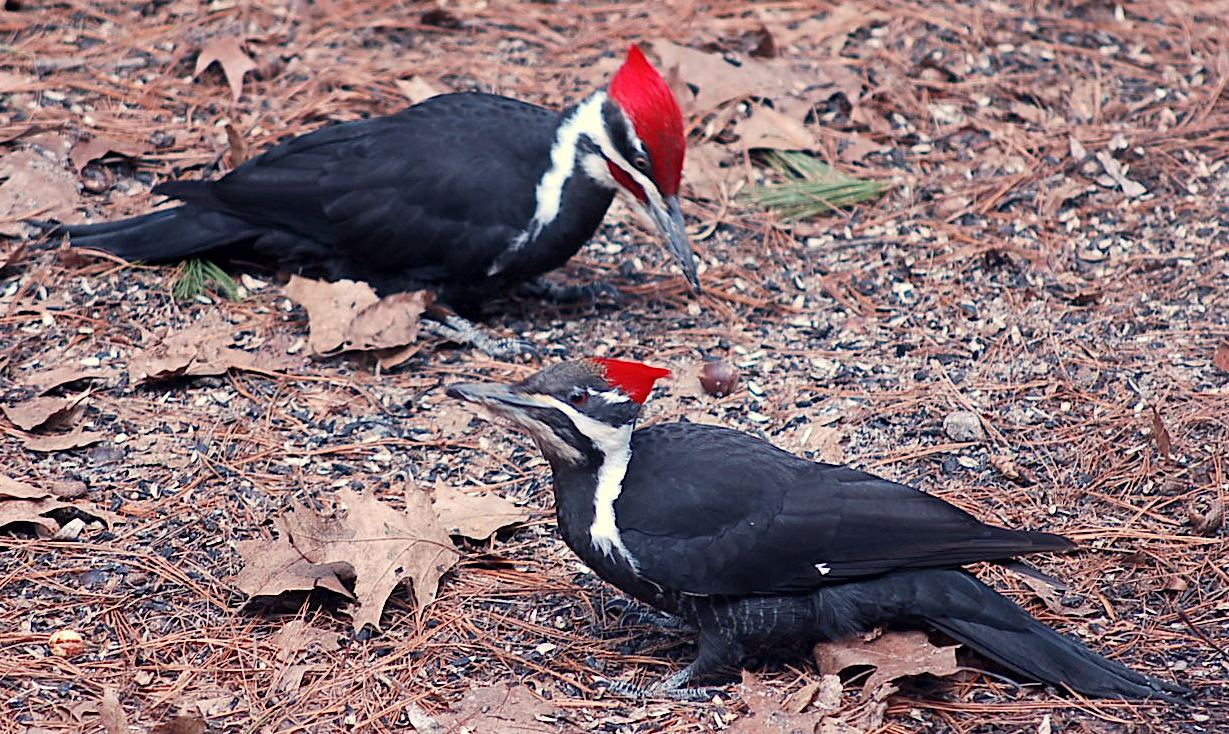Discover the Interesting World of Woodpeckers: Every Little Thing You Required to Know
The globe of woodpeckers is a realm loaded with distinct behaviors, detailed adjustments, and a diverse array of varieties. From their habitats and distribution patterns to their feeding habits and specialized physiological functions, woodpeckers have long astounded the rate of interest of ornithologists and nature enthusiasts alike. Comprehending the complexities of these interesting birds gives a look into the complicated interplay in between their biology and the atmosphere. As we discover the world of woodpeckers further, we reveal a riches of info that clarifies their significance in ecosystems and the difficulties they face in an ever-changing world.
Woodpecker Habitats and Circulation
Woodpeckers occupy a diverse series of settings worldwide, showcasing adaptability in their circulation patterns. These resistant birds are located in woodlands, woodlands, savannas, and deserts throughout various continents, demonstrating their capability to prosper in various weather problems. In The United States and Canada, as an example, woodpeckers can be spotted in both coniferous and deciduous forests, utilizing their strong beaks to forage for insects and create nesting cavities in trees. Similarly, in Africa, certain woodpecker types have actually adjusted to dry settings, such as the acacia timberlands, where they play a crucial duty in regulating insect populaces.

Feeding Behaviors and Diet
Amongst the various facets of their actions, woodpeckers show distinct feeding routines and dietary choices. These birds are largely insectivores, with a diet that includes ants, beetles, caterpillars, and other pests discovered in trees. Woodpeckers utilize their strong beaks to pierce into the bark of trees, probing for pests and larvae concealed beneath the surface. In enhancement to pests, woodpeckers also consume nuts, seeds, fruits, and sap. Some species have specialized tongues with barbed ideas that help them remove insects from holes in wood.
Woodpeckers are understood for their drumming actions, which offers not only to connect with other woodpeckers however additionally to situate food. The fast drumming noise is produced by the bird pecking on powerful surfaces like dead trees or metal poles. This behavior can draw in bugs hidden in the timber, permitting the woodpecker to find their existence and prey on them.
Distinct Adaptations for Tree Climbing
In their skilled search of pests hidden within tree bark, woodpeckers have developed remarkable physiological features that equip them with distinct adjustments for reliable tree climbing. Woodpeckers have solid neck muscular tissues and an unique skull structure that absorb the impact of constant pecking, enabling them to climb vertically without creating harm to their brains. These adjustments display the unbelievable transformative layout that makes it possible for woodpeckers to browse trees with precision and performance.
Diverse Woodpecker Variety Worldwide
With over 200 various varieties spread out throughout different habitats worldwide, the family members of Picidae incorporates an impressive variety of woodpeckers. These birds can be located in woodlands, forests, savannas, and even metropolitan areas, showcasing their versatility to different environments. From the iconic Northern Flicker in The United States And Canada to the vivid and evasive Crimson-backed Flameback in Asia, each woodpecker types displays distinct characteristics in terms of tuft, habits, and habitat preference.
Woodpeckers vary greatly in dimension, with the small Downy Woodpecker determining around 6-7 inches in length, while the effective Lineated Woodpecker can rise to 17 inches view it - Woodpeckers in Florida. Their beaks also come in various sizes and shapes, mirroring their feeding routines. Some types specialize in removing bugs from tree bark, like the Acorn Woodpecker, while others, such as the Black-cheeked Woodpecker, feed upon fruits and seeds

Preservation Initiatives and Difficulties
Preservation campaigns for woodpecker populaces are critical in reducing the effect of environment loss and various other threats facing these varied avian varieties. Woodpeckers face different difficulties to their survival, primarily due to logging, urbanization, climate modification, and intrusive types. To resolve these issues, conservation efforts concentrate on securing and bring back woodpecker habitats, executing sustainable forestry techniques, and elevating understanding regarding the value of these birds in ecological communities.
One significant challenge in woodpecker conservation is the fragmentation index of their environments, bring about separated populaces that are extra at risk to termination - Woodpeckers in Florida. Guardians function to produce wild animals hallways and shielded locations that attach these fragmented environments, click this link enabling woodpeckers to move between various locations for feeding, breeding, and shelter

Conclusion
In verdict, woodpeckers are remarkable birds with unique adjustments for tree climbing and feeding actions. More study and conservation activities are needed to make sure the survival of woodpeckers in the wild.